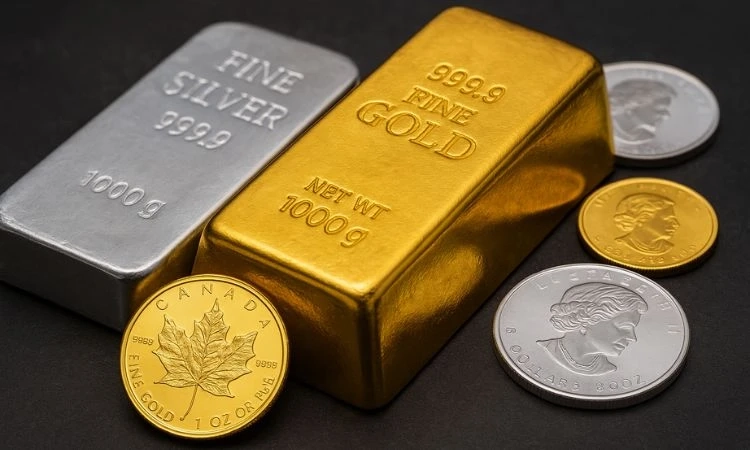Gold and silver prices have been on a powerful upswing in recent months, sparking renewed interest among Canadian investors, bullion dealers, and forex market participants. As global uncertainty deepens and monetary policy shifts, the appeal of precious metals has surged — but can this momentum last, or is a pullback on the horizon?
A Flight to Safety Amid Global Uncertainty
The sharp rise in gold and silver prices is largely driven by safe-haven demand. With geopolitical tensions simmering across multiple regions and major economies showing signs of strain, investors are seeking stable assets that can protect capital. Gold has recently climbed above US $4,000 per ounce, while silver continues to gain traction due to both investment and industrial demand.
For Canadian investors, this global uncertainty has a dual effect: it lifts metal prices in U.S. dollars while the Canadian dollar’s relative weakness amplifies returns in local terms. This makes gold and silver particularly attractive for domestic buyers and traders looking for a hedge against both inflation and currency volatility.
Central Bank Policies and Rate Expectations
The outlook for global interest rates remains one of the biggest catalysts behind the metals rally. Markets are increasingly pricing in the possibility of rate cuts in 2025, as inflation pressures stabilize but growth slows. For gold and silver, this environment is ideal — lower yields reduce the opportunity cost of holding non-yielding assets.
In addition, central banks worldwide continue to accumulate gold, diversifying away from the U.S. dollar and strengthening their reserves amid ongoing trade and currency tensions. This institutional demand provides a structural foundation for prices, making the rally more resilient than past scpeculative surges.
Canadian market participants — from forex brokers to bullion retailers — are feeling the ripple effect. Lower global yields and stronger safe-haven demand are driving increased trading volumes, higher bullion sales, and growing investor appetite for physical gold holdings.
Silver’s Strength: Industrial Demand and Tight Supply
Silver’s rally has an added layer of support from its industrial uses. The metal is essential for manufacturing solar panels, electric vehicles, and high-tech electronics — sectors that are booming worldwide. However, silver supply remains limited, as it is often mined as a by-product of other metals like copper or zinc.
This structural supply constraint, combined with growing demand from clean-energy industries, has created a bullish setup for silver that’s hard to ignore. For Canadian refiners and metals traders, this trend is opening new opportunities in both the retail investment and industrial export markets.
Can the Rally Continue?
The outlook for the next 12 to 18 months remains cautiously optimistic. Analysts from the London Bullion Market Association (LBMA) project that gold could test US $5,000 per ounce if current macroeconomic conditions persist.
However, there are notable risks. If the U.S. dollar strengthens, or if interest rates unexpectedly rise, metals could face downward pressure. Similarly, a sharp improvement in global growth or equity markets could draw capital away from precious metals in the short term.
That said, the medium-term fundamentals remain supportive. Persistent inflation, central bank diversification, and increased industrial demand are likely to keep gold and silver prices elevated compared to historical averages.
The Canadian Market Perspective
For Canada’s gold and forex market professionals, this period represents both opportunity and volatility. Dealers and brokers can benefit from higher trade activity, while investors may look to rebalance portfolios toward tangible assets as a hedge against macro risk.
As the global economy transitions into a lower-rate, higher-uncertainty phase, precious metals are reasserting their role as strategic anchors in diversified portfolios. Whether the rally continues or pauses, gold and silver will remain central to Canadian investment strategies — not just as commodities, but as long-term stores of value in an increasingly unpredictable world.



